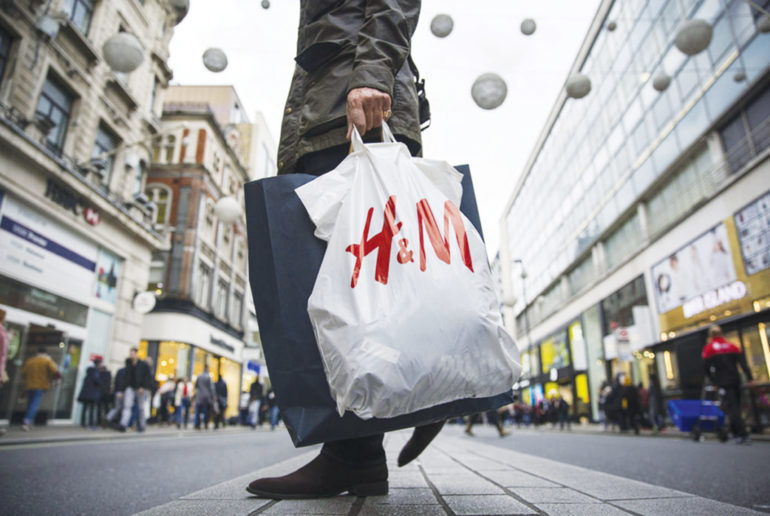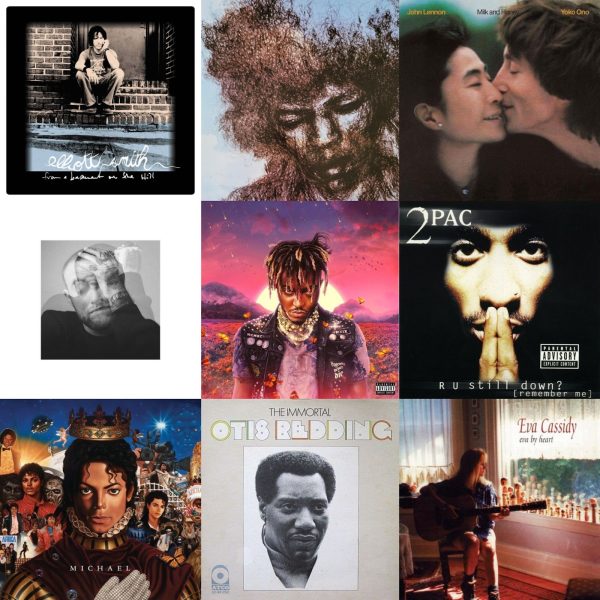Fast fashion is destroying the planet
Fast fashion, disguised as the most current clothing trends from the runway going into stores at an affordable price, can be seen in every major retailer on the streets. H&M and Forever21 are just a few of the massive companies that follow this debasing idea that feeds the hunger for new and en vogue pieces. Earth Day 2020 has hinted at many signs that our planet needs a timeout from our actions. With COVID-19 on the rise, there have been many unintended consequences observed, some of them uplifting, some of them grim.
Fast fashion is defined as the flow of clothing from the catwalk to retailers in an often timely manner that depletes Earth’s resources. The fragility of our planet is deeply related to our environmental footprint that is everlasting.
According to a 2016 study from the Global Fashion Agenda, in 2015 alone, the fashion industry consumed 79 billion cubic meters of water. That is enough water to fill over 32 Olympic-size pools. The number is expected to increase by 50% by 2030 if nothing is done. It may seem like a lot of water, but it takes 10,000 liters to make a pair of jeans. (That equates to how much water the average human drinks in over 13 years).
The reasoning behind why clothing takes enormous amounts of water lies within the fabric used. Cotton, a thirst trap for water, takes 20,000 liters of water to produce a kilogram of fabric.
If companies rethink their strategies for deriving clothing materials, the stress put on our planet would be significantly less. Dana Thomas from The New York Times states that “More than 60 percent of fabric fibers are now synthetics, derived from fossil fuels.” The likelihood of these pieces staying in your closet for longer than two years, at most, is very low, meaning that it will reach the landfill within its first years of life and will not decay.
Water isn’t to blame for all of the fashion industry’s problems though it does have major issues linked to it. It is thought that over 8,000 chemicals are used to turn raw materials into textiles at the factory.
Following a high profile case study in a small village in India on the effects of the industrial pollution and birth deformities, it was reported that a river near a textile plant was “rich in dark black water with streaks of red and an intense smell of rotting radishes.” This leads officials to believe that chemical rejects from the plant are to blame as they are dumped in the river. Locals have reported birth defects and cases of cancer and blame the polluted water as a result.
This isn’t the first case of chemical mistreatment either. Indonesia and China are feeling the impacts of neglect as well.
The case study looked into over 40 of the world’s largest fashion brands and retailers directly to inquire about their chemical disposal rules, manufacturing policies, and the factories they are buying from. They received responses from a third of the brands reaching the conclusion that many have no chemical disposal-specific policies in place. A significant number of those who responded refused to reveal their suppliers.
Thus, brands are receiving backlash consequently from the attention of the negative accounts. H&M and Zara, the most notable labels are responding with a commitment to transparency and a movement towards change that truly embraces sustainability.
H&M started its first fashion-conscious line back in 2009, sourcing fabrics from organic cotton and recycled polyester.
A statement on their website read, “As a major player in the fashion industry, we have a great responsibility. We want to use our size to lead the change in making fashion circular and sustainable. If we say that we take care of both people and the planet, we need to be able to prove it.”
H&M still isn’t perfect. The brand scored a 73% in The Fashion Transparency Index for 2020. The ranking criteria includes policy and comments, governance, traceability, and spotlight issues.
H&M is the highest scoring brand this year at 73% of the 250 possible points, followed by C&A at 70%, Adidas and Reebok at 69%, and Esprit at 64%. Of the new brands added to the Index in 2020, 15 brands score 5% or less, including Canada Goose, Fashion Nova, Pepe Jeans, and DKNY.
As fashion labels are moving forward with sustainably sourcing among the long list of other commitments, consumers should do the same. For many, sustainability might mean purchasing from transparent companies. For others, it might mean buying only from second-hand stores. Whatever it may be, it is worth considering the sustainable alternatives offered.






